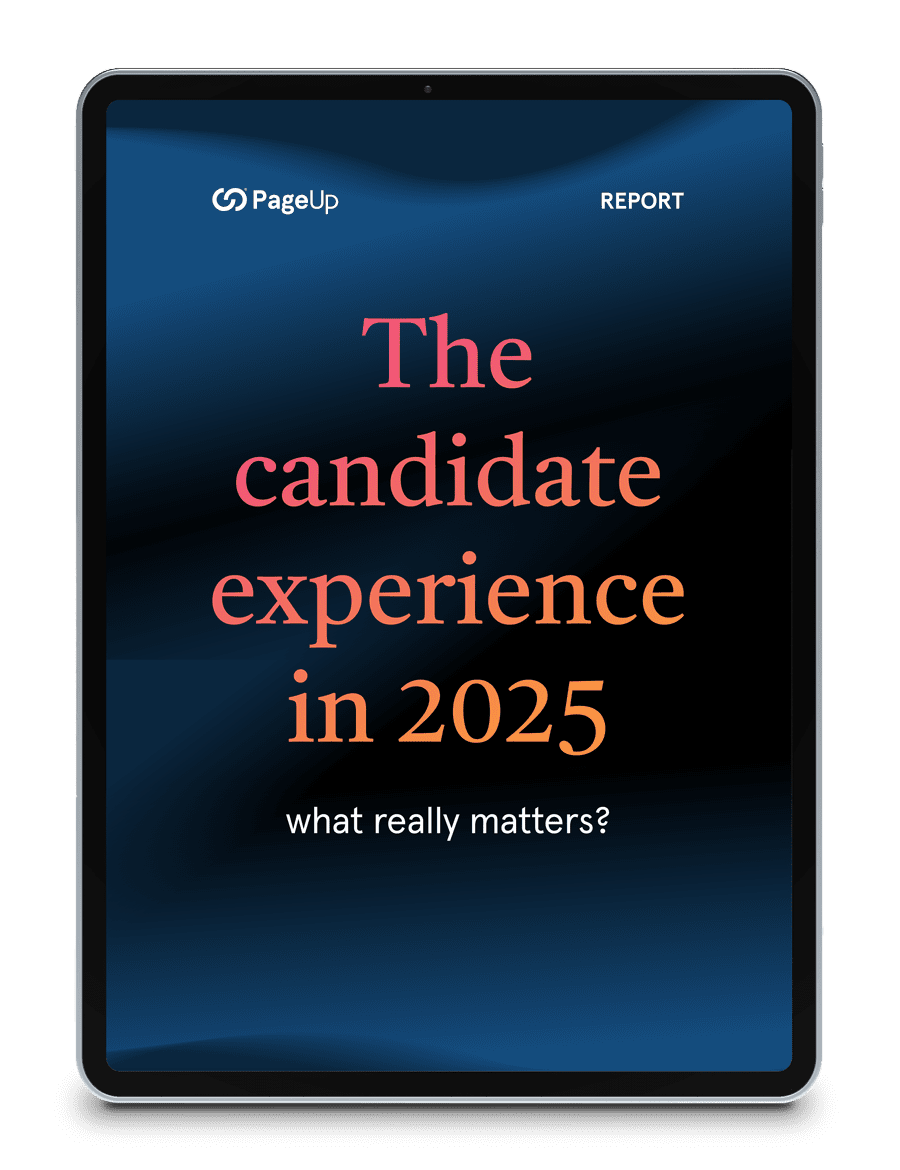Knowing which recruitment metrics to track tells you what’s working well in your hiring – and what needs attention. Based on PageUp research and conversations we’ve had with customers, we’ve uncovered 5 recruitment metrics that HR practitioners should be using, but which many don’t. We spoke to leading higher ed HR professionals from the University of Central Florida and the University of Delaware to uncover how they’re tracking the metrics that matter – here’s what they had to share.
Lori Koval is currently the Associate Director of Talent Acquisition for the University of Delaware (UD). She is passionate about recruiting, marketing and employment branding, and has experience successfully managing major change initiatives across an organisationorganization. One metric that her organisationorganization tracks and have optimisedoptimized is offer acceptance rate.
1. Offer acceptance rate
Offer acceptance rate is the percentage of candidates that accept a job offer. PageUp research has found offer acceptance rate varies across industries and between organisationsorganizations but on average it’s 94%. This means for every 100 offers made 94 people say yes and 6 people say no.
Top performing organisationsorganizations average a 99% offer acceptance rate year-in, year out. At the other end of the spectrum are organisationsorganizations that come in at the low to mid 70th percentile.
“The University of Delaware’s offer acceptance rate is currently 99%. We are proud of that statistic and equate it to the great job our recruitment team does,” Koval says.
She attributes their success to an attractive EVP and a focus on being transparent and communicative with candidates.
“UD is an employer of choice based on our culture, our location and strong benefits package,” she says. “As a recruiter, we establish relationships with candidates from the initial conversation to find out the reasons why they would consider UD. We can also be made aware of any potential issues and address them up front.”
“We aren’t able to always pay as competitively as the corporate world. We try our best to be transparent with candidates from the start about our salaries while stressing the value of our benefits package and overall work culture.”
Understanding UD’s high offer acceptance rate allows Koval’s team to focus on the 1% that isn’t accepting the job offer and uncover the reasons people say no.
“One issue that we’ve attacked this past year is cutting down the length of our hiring process. We’ve lost some strong candidates due to an extended interview timeline and that is definitely something under our control. We have a strategy meeting with our hiring managers at the beginning of a search to make sure we are on the same page for a realistic timeline.”
Building trust from the beginning is another way the University of Delaware keeps its offer acceptance rates high.
“If you can build trust with the candidate, we’ve found that you are blindsided at the 11th hour a lot less. We want to provide a positive candidate experience from the first phone conversation throughout their first year as an employee.”
2. Applicant to hire rate
Tracking the rate of applications you receive to people you hire tells an important story about the effectiveness of your job listings.
If you’re receiving too many applicants for a position, you may be leaving your job postings open for longer than necessary, or your role descriptions may not be targeted enough. This creates unnecessary work and slows down the recruitment process.
If you’re not receiving enough applicants for the position, you may be closing your job listings too early. This means you may not have the choice of skills you’re after.
Our research shows us that the average percentage of applicants to hire is 4% across all industries. As you look more closely at each industry, this figure changes. Higher Education hires 8% of their applicants, whereas Retail only hires 3%. Finance comes in at an average 4%, while Government roles only hire 1% of applicants.
For every 100 applications received by a Higher Education institution, 8 people are hired. Put another way, for every 1 hire you need 12 applications. In speaking to many of our customers it seems applicants to hire is a metric that recruiters either measure religiously or not at all.
The University of Delaware has experienced both high and low applicant to hire rates, depending on the position advertisedadvertized. In roles like administration, HR and athletics coordinators, the university will receive over 100 applications. In specialisedspecialized roles such as grant analysts, there may be only 10-15 applicants.
“In the situations where we don’t feel like we are getting enough applications, we will regroup with the hiring manager and see how creative we can be,” Koval says.
“We will discuss tapping into referrals. Great people typically know great people, and even though we don’t currently have an established referral program, we will offer incentives for one-off roles. We will also see if there are additional specific job boards or listservs we can tap into.”
The University of Delaware is also tapping into internal talent pools to find or develop employees for specialisedspecialized roles, as well as proactively reaching out to candidates.
“For our grant analyst positions, after many discussions with hiring managers we are investigating creating a training program and grooming our own internal talent pool. In addition, we’ve been looking to utiliseutilize social media to “share” the word about openings not only through our recruiters but with the hiring manager and their teams. Sometimes a candidate will feel more inclined to respond to a posting if they see it coming from someone in the department. We also proactively target passive applicants by researching comparable roles at other institutions and through searches in LinkedIn.”
Abbee Camen is the Associate Director of Employment Services & Records within Human Resources at the University of Central Florida. Her university proactively recruits those hard-to-fill positions by targeting people who may not even be looking for a new role.
“Our College of Medicine proactively recruits for positions by attending medical conferences, or targeting member lists for different professional association memberships for medical specialties that are harder to fill,” she says.
It’s an approach that works: Research shows that the majority of people who took a new job last year weren’t looking for one – someone proactively approached them for the role.
If your applicant to hire volumes are much lower than you’d like, ask:
- Are your job ads reaching and engaging the correct audience?
Make sure the wording of your role descriptions are free of bias, targeted and specific enough to reach the right audience.
- Are you advertising in the right locations?
Are job seekers aware there is a position open? If the vacancy isn’t reaching them, they can’t apply. Consider niche or additional job boards, as well as career fairs, social media and employee referrals.
- Does your careers site showcase your employer brand?
Don’t underestimate the importance of your careers site. This is where both active and passive job seekers go to find out more about your University, your values and employee value proposition. Revamping your careers site, improving the content, showcasing the employer brand and simplifying the online application process increases applications.
- Is your application form mobile optimisedoptimized?
From the applicant’s perspective, the application process speaks volumes as to what type of tech experience they will have at work. If it’s too long or hard to complete on any device, applicants are likely to give up – or find an employer that meets their technology expectations.
3. Percentage candidates to hire
How many candidates do you say ‘no’ to when filling a role? How many candidates do you need to present to hiring managers so they are confident that they’re seeing the best talent? Some organisationsorganizations work on ‘number’ of candidates – a rough rule of thumb is that 5 to 6 candidates should be presented to the hiring manager.
We define percentage candidates to hire as the total number of hires divided by the total number of candidates for the role or position.
Our research has found the average percentage of candidates to hires is 10% – but this number varies from industry to industry. For Higher Education 19% of candidates are hired, whereas Retail only hires 7%. Finance comes in closer to the average at 10%, and Government bodies hire 4% of candidates.
If we use the Higher Education figure of 19% candidates to hire, this means 20 candidates out of 100 are hired and 80 are told ‘no’.The lower the percentage the more candidates are being told no.
Why does tracking candidates to hire rate matter? Taking high volumes of candidates through recruitment activities is costly and labour intensive. It’s also hard to provide adequate care to high volumes of applicants – which means candidate experience suffers. The experience candidates have during the recruitment process will influence whether they want to work for you – or your competitor. Maintaining a good candidate to hire rate is also important to keep hiring managers engaged in the recruitment process.
The University of Central Florida receives roughly 68,000 applications a year – but not all these applicants are qualified for the positions they’re applying for. “We find that some candidates apply for a variety of positions that they are not necessarily qualified for. Candidate care is something that we are emphasizing more with our hiring departments as we are very decentraliseddecentralized. Many departments keep in contact with the candidates via phone calls, emails, and even text messages to try to keep them engaged. The bulk communication tools within PageUp are assisting us with this,” says Camen.
“Hiring manager engagement is challenging as some positions can sit for several months before interviews are scheduled, and then they want the individual to be hired right away. Managing expectations is very important.”
Koval has also been working on improving hiring manager engagement by optimizing UD’s rate of candidates to hire. This includes:
- Setting up an initial strategy meeting for each role to be filled
- Understanding the hiring manager’s pain points, expectations and what a successful candidate looks like.
- Sharing information about current market conditions for the role, and recommendations to streamline the interview process to ensure they don’t lose candidates along the way.
- Asking hiring managers and their teams for candidate recommendations. “I’ve even recommended coffee break referral time where employees come for some coffee and snacks and brainstorm people that the recruiting team can network with,” says Koval.
- Setting up weekly calls with hiring managers to ensure they are aligned with the timeframe of the recruitment process and to regularly address any issues and questions that arise.
- Having ongoing touch-base calls with candidates. “A lot of our success comes from building trust with the candidate and with the hiring manager so that we can tackle any issues before they become insurmountable,” says Koval.
4. Sourcing channel effectiveness
There is a difference between knowing where your applications come from and knowing the effectiveness of each source. Sourcing channel effectiveness tells you which channels are delivering quality candidates, and which channels aren’t worth the cost.
When we talk to our customers about sourcing channel effectiveness we always ask the following 4 questions:
- What are your main sourcing channels?
- Where do most of your applicants come from?
- Where do most of your hires come from?
- Which channels do you think are the most effective?
At the University of Central Florida, employee referrals account for 4% of all applications – and lead to 29% of hires. This is a lucrative source of quality candidates for the university, and Camen is on the lookout for other high-performing channels.
UD has even greater volumes of employee referrals: they account for 14% of their applications, and the university hires a whopping 47% of these employee-referred candidates.
“Great people typically know great people so we try to tap into referrals. We are planning on rolling out an official employee referral program in 2020 which should increase those numbers,” says Koval.
“We needed to be able to prove where our hires were coming from in order to share what sources made sense to post our jobs to. We are marketing our employer brand through Facebook, LinkedIn and Twitter. By sharing relatable stories of working at UD, we can connect to more people and have a wider reach to attract more passive applicants.”
Koval plans on using these data points to further show hiring managers where they’re seeing strong ROI – and which channels are a waste of money. Understanding the most effective source of talent for your organisationorganization ensures you get the best ‘bang for your buck’ both in terms of spend and recruitment effort.
5. Mobile applications and time to apply rates
These are two separate metrics that work together to tell a story that might otherwise be overlooked.
There are several converging trends driving the adoption of mobile-optimisedoptimized recruitment:
1. Demographic changes
93% of millennial workers say that a business having up-to-date technology is an important factor when choosing a workplace.
2. Smartphone adoption rates
There are now more mobile devices than people on the planet. The number of mobile devices surpassed the global population in 2014 and the smartphone adoption rate continues to climb.
3. The expectation of a consumer experience at work
Candidates, recruiters and hiring managers all expect a consumer-grade experience at work. Candidates want to be served a seamless experience from the job search through to applying for a role. Hiring managers and recruiters expect to be able to approve requisitions, book interviews and move candidates through the process from their mobile device.
Percentage of mobile applications calculates the proportion of applications that come in via mobile devices such as smartphones or tablet. Time to apply is the time it takes the job seeker to fill in and submit the application form.
The these two metrics have a close relationship. Many candidates will abandon an application process, survey or form if it is too long or difficult to complete on their mobile device. Our research has found a correlation between time taken to complete the application and mobile device usage. As the application form lengthens the number of incomplete applications via mobile devices increases.
Tracking mobile application rates has shown the University of Delaware how mobile-optimisedoptimized their application process is. This ensures they’re matching candidate technology expectations.
“PageUp allows us to have a mobile-friendly application process. This was an important point for us as we know how many people do everything they possibly can on a mobile device. We didn’t want to lose out on strong candidates because our mobile platform was not user-friendly,” Koval says.
“As for our application itself, we’ve cut it down to capture only the most important information so that it shouldn’t take an applicant too long to fill out. We are eager to utiliseutilize the data further so we can make additional tweaks to our application process.”
Taking this proactive approach ensures you’re not missing out on top talent to competitors who are able to meet a candidate’s technology expectations.
Ensuring you collect and analyse the data you need to measure these five often-overlooked metrics can save your organisationorganization significant time and money and help you attract and retain the best talent.
Fresh insights for HR
Stay up to date with HR trends, tips and more when you sign up for our industry newsletter





